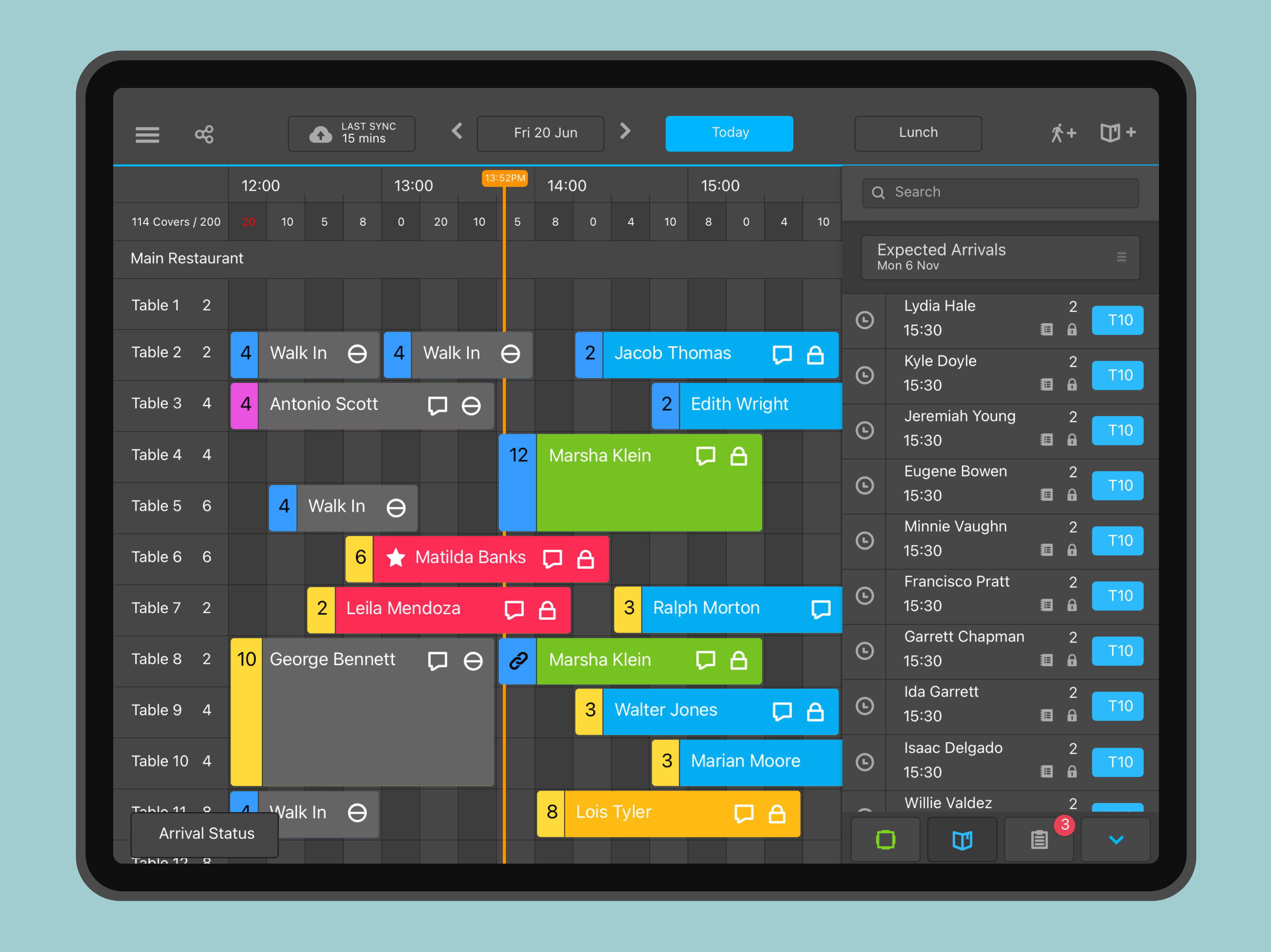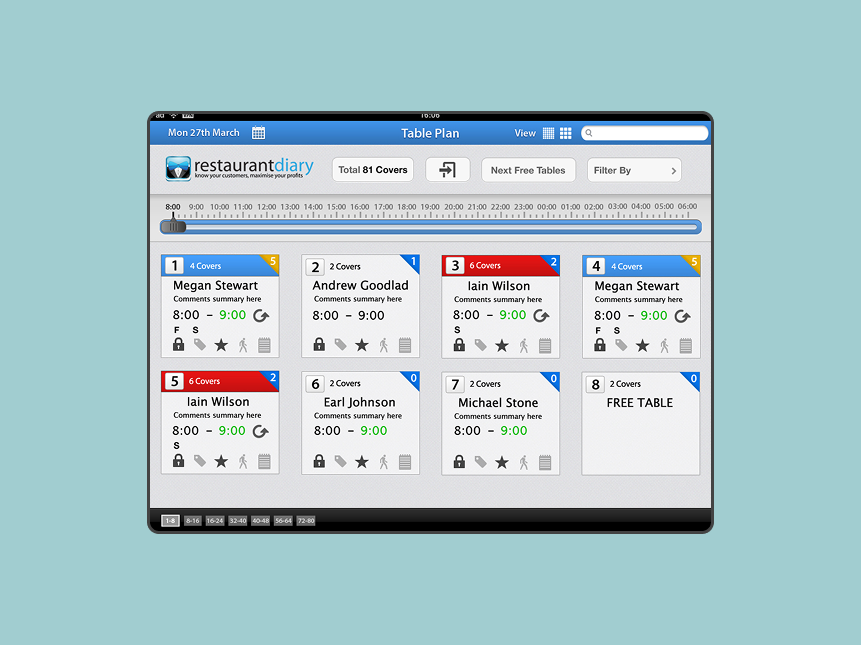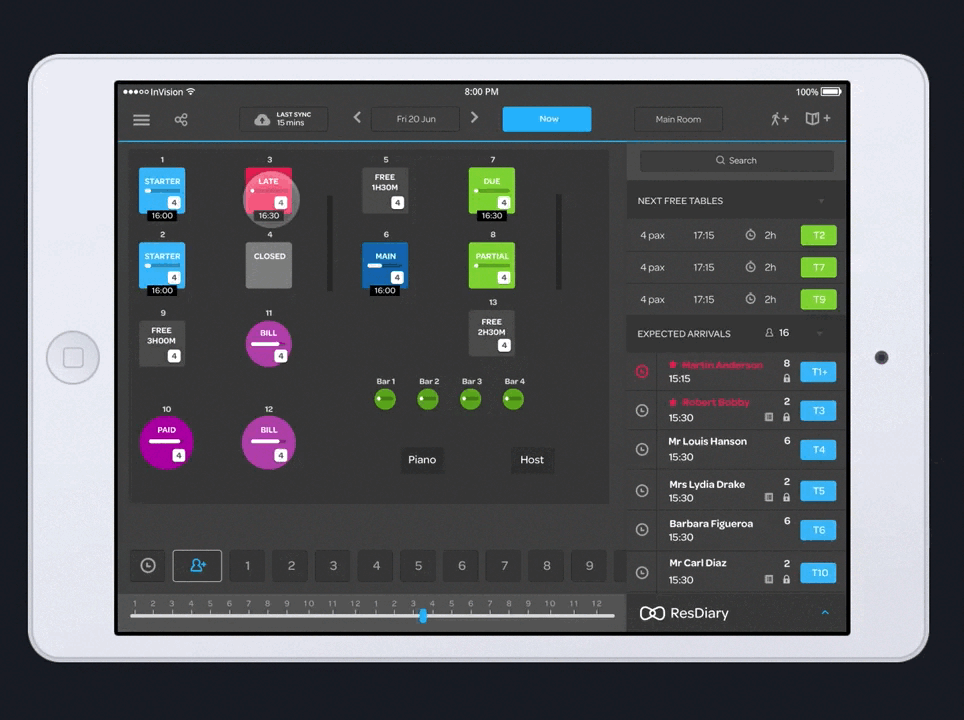Mission
In 2011, ResDiary Host became one of the first iPad apps to bring restaurant reservations out from behind the desk and into the hands of hosts and managers. By 2014, the landscape had changed, the App Store was crowded with competitors, and ResDiary Host had grown bloated with features, suffering from performance and reliability issues.
Our mission in 2015 was to start fresh. We set out to design and build ResDiary Plus, a fast, lightweight, and intuitive reservation app that put user experience back at its core. We wanted restaurateurs to have the freedom to manage their venues with ease and confidence, whether on the floor or on the go.
2017 ResDiary Plus app
My Contributions
Although I often refer to “we,” the project was primarily a collaboration between one iOS developer and myself. I led the user research, UX and UI design, prototyping, and user testing, while also defining the app’s product direction and visual design system.
My key contributions included:
Conducting user interviews and surveys to understand pain points and workflows.
Redesigning the entire user interface from the ground up, simplifying navigation and task flow.
Creating detailed, high-fidelity prototypes in Sketch and InVision.
Running iterative usability tests that shaped core interactions.
Collaborating closely with the sole developer to align design and technical constraints.
Defining a design language that balanced clarity, speed, and hospitality.
Original 2011 RestaurantDiary Host app built by a third party
Discovery Phase
Our research began with understanding how restaurateurs actually used the product during service. Through frequent interviews, surveys, and on-site observations, we uncovered three key insights:
Mobility mattered most. Hosts needed to move freely around the venue while managing tables.
Simplicity beat sophistication. Many users felt overwhelmed by feature creep, they valued speed and clarity above all.
Visibility was critical. Unlike the desktop, users wanted to see the table plan while taking bookings to keep situational awareness.
Armed with these findings, we refined the app around three pillars: speed, clarity, and confidence. Every design decision, from button size to flow logic, served those principles.
We validated concepts using detailed prototypes in Sketch and InVision, covering nearly every in-service scenario. Regular testing sessions revealed issues early (like the importance of keeping the table plan visible during bookings), allowing us to adjust before development, saving weeks of rework and keeping us on schedule.
Version 1 of ResDiary Plus
User Testing the InVision Prototype of ResDiary Plus
Impact
The redesign and relaunch of ResDiary Plus had a measurable and lasting impact on the business and its users:
67%
faster average booking flow: Streamlined UI and workflow reduced booking time from 18 seconds to just 7.
92%
Higher customer satisfaction: Post-launch surveys reported a 92% satisfaction rate, up from 53% on ResDiary Host.
44%
increase in active daily users: Improved reliability and ease of use attracted both existing and new customers.
81%
Stability and performance gains: App crashes dropped after bringing development in-house.
30%
growth in app adoption year-on-year: Especially among small independent restaurants transitioning from pen-and-paper systems.
Acquisition
This app gave Accor Group the confidence in ResDiary’s ability to lead in the market.
ResDiary Plus became the foundation for the company’s mobile suite, driving new revenue opportunities and positioning ResDiary competitively in a crowded reservation app market.
Satisfaction
Iteration and Evolution
After the successful 2015 launch, ResDiary Plus became a cornerstone product for restaurant partners. In 2016, we were tasked with a simple but open-ended brief:
“Find out what we need to do to make our app better.”
Over several months, we ran fresh research and usability testing, identifying opportunities to streamline daily operations further. This led to the design and development of two major enhancements:
Waitlist: Giving hosts the flexibility to manage walk-ins and late arrivals without chaos.
Payments (Q1 2018): Integrating quick, in-app payments to reduce friction between booking and billing.
These iterations strengthened ResDiary Plus’s position as a dependable, modern, and user-centred reservation solution, one that grew with its users.
Waitlist
Mini reservation sidebar
Summary
ResDiary Plus represented a pivotal shift for the company, from outsourcing development to building an in-house, design-led culture. The project demonstrated that focusing on user-centred design, continuous iteration, and tight designer–developer collaboration can transform not just a product, but an entire product philosophy.







